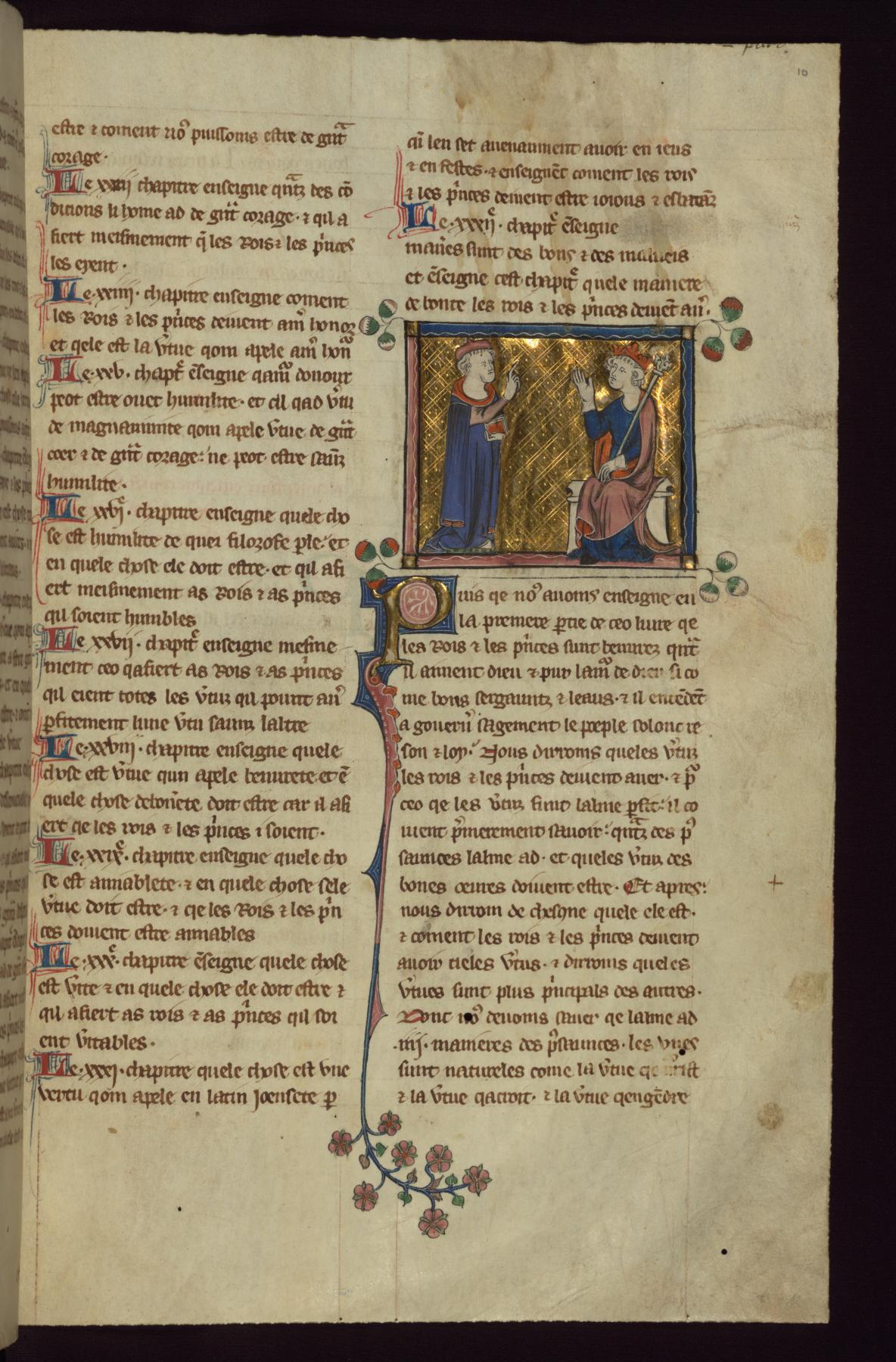Scholar holding a book instructs a seated prince
(Manuscripts and Rare Books)
Provenance
Provenance (from the French provenir, 'to come from/forth') is the chronology of the ownership, custody, or location of a historical object. Learn more about provenance at the Walters.
Copied in England (probably London), ca. 1300-1325; Monastery of Sancti Gualtheri (cropped inscription with 16 November 1463 date, fol. 121r), [mode of acquisition unknown]; Ebenezer Mussel, London [date and mode of acquisition unknown]; His sale, London, 30 May 1766, no. 90 [inscription fol. 121r]; William Bayntum, London, 30 May 1766, by purchase; His sale, London, 4 June 1787; John Louis Goldsmid (his arms on binding), London, 4 June 1787, by purchase; Sale, Christie's, London, 11 December 1815, no. 293, to n. 69 bis in a French catalogue (ca. 1840); [Examined by Paulin Paris (notes on fol. b)]; Joseph Barrois collection (no. 22) [date and mode of acquisition unknown]; Fourth Earl of Ashburnham, London, 1849, by purchase [from Joseph Barrois];
His sale, Sotheby's, London, 11 June 1901, no. 241; C. Fairfax Murray, 1901-before 1912, by purchase; L. Rosenthal, 1912 [mode of acquisition unknown]; Leon Gruel, Paris, after 1912 [mode of acquisition unknown]; Henry Walters, Baltimore, before 1931, by purchase from Leon Gruel; Walters Art Museum, 1931, by bequest.
[Other earlier ownership marks: no. 9 in red on back of first flyleaf, no. 37 on back flyleaf; "John Nele" on front flyleaf.]
Geographies
United Kingdom, England, London (Place of Origin)
Measurements
H: 11 13/16 x W: 7 7/8 in. (30 x 20 cm)
Credit Line
Acquired by Henry Walters
Location in Museum
Not on view
Accession Number
In libraries, galleries, museums, and archives, an accession number is a unique identifier assigned to each object in the collection.
In libraries, galleries, museums, and archives, an accession number is a unique identifier assigned to each object in the collection.
W.144.10R





